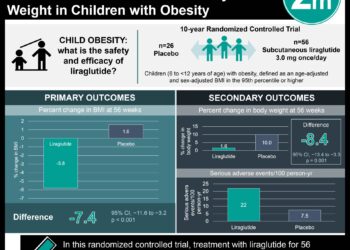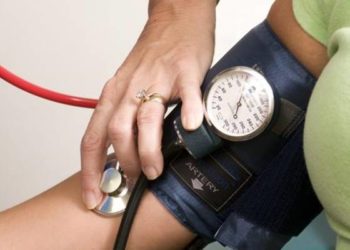2 Minute Medicine Rewind May 27th, 2024
1. In this randomized clinical trial, change in Knee Injury and Osteoarthritis Outcome Score (KOOS) score from baseline to 12 months in individuals that have had a total knee arthroplasty (TKA) was similarly associated with both interventions.
Evidence Rating Level: 1 (Excellent)
End-stage knee osteoarthritis has been frequently treated with a total knee arthroplasty (TKA). Most patients who undergo a TKA describe experiencing constant chronic pain and require maximal effort to endure. To understand the effects of treatment methods for TKA-related pain, this randomized clinical trial compared the use of neuromuscular exercise and pain neuroscience education (PNE) to PNE on its own. Individuals were included if they had a primary TKA to treat knee osteoarthritis lasting for a year or more and had chronic pain for longer than 6 months with an average daily pain score of 4 or higher over the last week. Individuals were excluded if their chronic pain was due to the loosening of the implant or prosthesis failure. The participants were randomly assigned in a 1:1 ratio to either of the two intervention arms; neuromuscular exercises and PNE or PNE alone. The outcome assessors were also masked, making this a double-blind controlled trial. The primary outcome of the study was the change in Knee Injury and Osteoarthritis Outcome Score (KOOS) from baseline to 12 months amongst the groups. The KOOS was determined based on the main score of pain, symptoms, activities of daily living, and knee-related quality of life (KOOS4). Some secondary outcomes included adverse events, serious adverse events, physical performance tests, and overall change in the participant’s knee condition. After eligibility criteria were met, 69 patients (median age, 67.2 years [IQR, 61.2-71.9 years]; 40 female [58%]) and 29 male [42%]) were included. The individuals were split, with 36 participants assigned to the neuromuscular exercise and PNE group while 33 were assigned to the PNE-only group. There was no difference between the groups in the intention-to-treat analysis for KOOS4 change from baseline to 12 months, with a mean difference of -1.33 (95% CI, -7.59 to 4.92; P=.68). When comparing the improvements in KOOS4 from baseline to 12 months, the neuromuscular and PNE group improved by 7.46 points (95% CI, 3.04-11.89; P=.001) while the PNE only group improved by 8.65 points (95% CI, 4.67-12.63; P<.001). There were 5 reported serious adverse events in the neuromuscular exercise and PNE group, and 0 adverse events reported in the PNE group. Overall, neuromuscular exercise and PNE were not superior to PNE alone concerning pain, symptoms, and knee-related quality of life.
Prenatal exposure to chemical mixtures and metabolic syndrome risk in children
1. In a cohort of mother-child pairs, certain endocrine-disrupting chemicals (EDCs) were shown to potentially lead to a higher occurrence of metabolic syndrome later in life.
Evidence Rating Level: 1 (Excellent)
Some symptoms that are associated with an elevated risk of cardiovascular disease end type II diabetes such as hypertension, dyslipidemia, insulin resistance, and abdominal obesity, can be represented by Metabolic Syndrome (MetS). Endocrine-disrupting chemicals (EDCs) are environmental pollutants that can cross the blood-placenta barrier, and exposure to them during fetal development may increase the risk of developing MetS later in life. To assess the association between prenatal EDC exposure and pediatric MetS risk score, a population-based cohort study was conducted involving mother-child pairs with prenatal exposure to EDCs. Data was taken from the Human Early Life Exposome (HELIX) project which included information for women living in France, the UK, Lithuania, Norway, Greece, and Spain. The EDC levels were measured in whole blood, plasma, serum, and urine samples which were collected from the mother during pregnancy or through cord blood during birth. Metabolites and protein levels were measured through the use of targeted methods. Some of the exposures included 5 perfluoroalkyl substances (PFAS), 3 organochlorine (OC) pesticides, 3 phenols, 7 high-molecular-weight phthalate metabolites (HMWPs), 9 metals, and 2 polybrominated diphenyl ethers (PBDEs). The child MetS score was constructed using z scores of many factors including waist circumference, blood pressure, and triglycerides to name a few. A total of 1134 mother-child pairs (mean [SD] maternal age, 30.7 [4.9] years; 517 female children [45.6%] and 617 male children [54.4%]). Of the children participating, 341 (30.1%) were classified as high risk according to the mean [SD] MetS score of -0.1 (2.3). Higher maternal BMI prepregnancy was associated with higher child MetS score. There was an increase in MetS risk score in prenatal EDC mixture for metals (β=0.44; 95% credible interval [Crl], 0.30 to 0.59), OC pesticides (β=0.22; 95% Crl, 0.15 to 0.29), PBDEs (β=0.17; 95% Crl, 0.06 to 0.27) and PFAS (β=0.19; 95% crl, 0.14 to 0.24). On the other hand, a lower MetS score was associated with HMWPs (β=-0.07; 95% Crl, -0.10 to -0.04) and LMWPs (β=-0.13; 95% Crl, -0.18 to -0.08). Women were more susceptible to PFAS and PCBs when compared to men, thus indicating sex-specific metabolic disruption. Overall, there may be an association between adverse metabolic health and prenatal exposure to EDCs.
Epidural analgesia during labour and severe maternal morbidity: population-based study
1. In a cohort of 567 216 births, severe maternal morbidity (SMM) was significantly reduced in women given an epidural analgesia.
2. Presence of maternal risk factors and prematurity were associated with a greater benefit from epidural analgesia.
Evidence Rating Level: 2 (Good)
Severe maternal morbidity (SMM) levels have been increasing and have become a pressing global issue. Epidural anesthesia is commonly given during labour, especially in pregnant women who are considered to be at a higher risk. Currently, however, there is a lack of high quality evidence examining the effect of epidural analgesia and maternal morbidity, To understand the effect of epidural analgesia, SMM, defined as a composite outcome of 1 or more of 21 conditions occurring at delivery or 42 days post-partum, was used as the primary outcome in this population based cohort study. The secondary outcomes included having 1 or more of the 21 CDC conditions when that condition led to hospital admission for critical care up to 42 days after birth. The study included 567 216 women who gave birth in Scotland during the time of the study, with 125 024 (22.0%) of them having received an epidural. The mothers who had an epidural were more likely to be from a higher socioeconomic group, be non-smokers, and have a higher birthweight baby. SMM occurred in 2412 women (0.43%). SMM was more commonly observed in women with an indicated purpose for epidural (819/77 439, 1.06%) and in women having a preterm birth (581/39 601, 1.47%). Epidurals given during labour were also associated with a reduction in SMM (adjusted relative risk 0.65, 95% CI 0.50 to 0.85) along with SMM and critical care admission (0.46, 0.29 to 0.73). Comparing subgroups of women, those who have a medical indication for analgesic epidural had a greater reduction in SMM risk (0.50, 0.34 to 0.72) compared to those without a medical indication (0.67, 0.43 to 1.03) for epidural analgesia; likelihood ratio of difference between subgroups, P<0.001. Additionally, women giving birth prematurely also had a greater decrease in SMM risk (0.53, 0.37 to 0.76) compared to women delivering at term or post-term (1.09, 0.98 to 1.21); likelihood ratio of difference between subgroups, P<0.001. In women with a medical indication that delivered prematurely, the risk reduction in SMM was greater (0.36, 0.24 to 0.53) when compared to women with no medical indication delivering at term or post-term (1.14, 0.99 to 1.31); likelihood ratio of difference between subgroups, P<0.001. In conclusion, analgesic epidural was associated with a decreased risk of SMM in all women, particularly in women with a medical risk factor, and in women who delivered prematurely. Based on the findings, maternal health could be improved if there was greater access to epidural analgesia for all women.
1. In a double-blind randomized control trial, women assigned to receive a speculum lubrication gel reported less pain and dissatisfaction during pap smears compared to control.
2. There was no difference in the proportion of women from either group willing to return for a repeat pap smear in the future.
Evidence Rating Level: 1 (Excellent)
Cervical cancer is one of the most prevalent malignancies in females and represents 6.6% of all gynaecological carcinomas worldwide. Testing for cervical cancer via pap smears is of utmost importance in early detection and intervention along with decreasing the malignancy risk. The current testing method is a Papanicolaou smear, a cost-effective, safe, and reliable tool for testing for cervical malignancies. However, some women experience pain and discomfort leading to hesitance in returning for future tests. The researchers hypothesized that speculum lubrication would combat this and encourage more women to get routine pap smears. Included in the study were pre-menopausal women 25 years or older, and post-menopausal women requiring pap smear screening. Patients were excluded if they were pregnant, a virgin, recently had sexual intercourse, were on their menstrual cycle, taking hormone replacement therapy, had any cervical pathology, and had a vulvar pathology. To assess the effectiveness of lubrication for cervical cytological smears, the primary outcome was the proportion of women who were satisfied with their smears along with the mean pain rating. Furthermore, the secondary outcome was the proportion of women willing to come in for a repeat test. After meeting the eligibility criteria, 132 women were randomized into the gel group (n=66) and the no-gel group (n=66). When comparing the women in the experimental group versus the control group, there was no significant difference in the proportion of unsatisfactory smears (13.6% vs. 21.2%; p = 0.359) and normal Pap smear results (100.0% vs. 98.1%; p = 0.477). The unsatisfactory results were due to inflammation (11.1% vs. 14.3%; p = 0.691) in the gel group and the presence of scanty cells (88.9% vs. 85.7%; p = 0.691) in the no gel group. Women in the no gel group had a significantly higher pain score compared to women in the gel group (87.96 vs. 45.04; p<0.001). When comparing the gel group versus the non-gel group, 69.7% versus 3.0% had mild pain, 22.7% versus 68.2% had moderate pain, and 7.6% versus 18.2% had severe pain respectively (P<0.001). It was noted that women who felt the most pain during the pap smears were those at the extremes of parity. In all, speculum lubrication was associated with significantly less pain and discomfort during the pap smear, did not reduce the adequacy or satisfaction of the smears and did not lead to unwillingness to return for repeat smears in the future.
1. In a randomized control trial focusing on adults with excessive drinking behaviours, individualized interventions were associated with decreasing alcohol consumption and Alcohol Use Disorder Identification Test AUDIT-C scores across 6 months.
Evidence Rating Level: 1 (Excellent)
Excessive consumption of alcohol is linked to many negative side effects. This is especially true for minors, as early overuse can result in alcohol-use disorders when older. While interventions designed to help reduce minor use of alcohol have been examined, their effects have thus far proven to be moderate. Some genetic polymorphisms in aldehyde dehydrogenase 2 (ALDH2) and alcohol dehydrogenase 1 B (ADH1B) reduce alcohol tolerance and are associated with higher levels of alcohol-related disease. By examining one’s enzyme genotype, more direct interventions may be done to help limit alcohol-related health problems. While previous interventions have focused on ALDH2 polymorphisms, this study focused on ADH1B polymorphisms. In this open-labelled randomized control trial in Japan,196 participants aged 20-30 years who consumed more than 4 or 2 drinks per day (for men and women respectively) had 5 drinking habits categorized, and interventions prescribed based on polymorphism screening. Participants were distributed to intervention and control groups, with the intervention undergoing genetic testing and receiving information based on results. The primary outcome was the amount of alcohol consumed, while the secondary outcome was the Alcohol Use Disorder Identification Test (AUDIT), with follow-up surveys at 1, 3 and 6 months. The dropout rate for the study was quite high, over 20% in both groups, likely due to the difficulty in recording drinks had with the calendar. Additionally, in randomization, there was a sex discrepancy in both cohorts. The control group saw no significant differences in consumption across the study, while consumption decreased significantly in the intervention group across both 3 and 6 months (p<0.01). Of note, at 6 months the alcohol consumed, while less than baseline, was higher than 3 months (<0.05). AUDIT-C scores were lower for the control group only at 6 months compared to baseline (p<0.01), while the intervention group saw reduced values at 3 months compared to baseline, and 6 months compared to baseline (p<0.001 for both) with no changes between 3 and 6 months. While AUDIT-C scores were lower at both 3 and 6 months for the intervention group, alcohol consumption was only lower at 3 months compared to the control. Overall, using the individualized intervention based on 5 classifications resulted in decreases in both alcohol consumption and AUDIT-C scores over 6 months.
Image: PD
©2024 2 Minute Medicine, Inc. All rights reserved. No works may be reproduced without expressed written consent from 2 Minute Medicine, Inc. Inquire about licensing here. No article should be construed as medical advice and is not intended as such by the authors or by 2 Minute Medicine, Inc.







